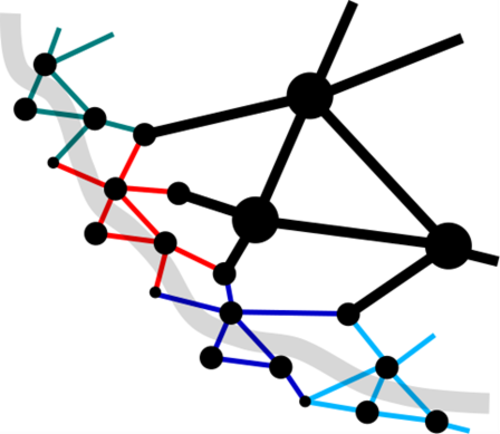Int2Grids Integration von intelligenten Quartiersnetzen in Verbundnetze
Motivation
The change towards decentralized energy supply associated with the expansion of renewable energies offers many opportunities but also risks. For example, it is interesting for agricultural enterprises if they can produce their own energy and feed surpluses into the electric grid. Intelligent management of farms can thus lead to a significant reduction in energy costs. For grid operators, on the other hand, a secure and economical supply is the most important factor. The increased integration of volatile energy producers considerably increases the complexity of network control. In order to guarantee secure supply and at the same time allow operational optimization within local network areas ("neighborhood networks"), it is then necessary to develop joint strategies involving both local plants and network operators. In doing so, the objectives of network and plant operators must be equally taken into account without neglecting the interactions that arise.
Goal
Int2Grids investigates how locally optimized neighborhood networks can be integrated into the interconnected network in such a way that both optimization goals of the neighborhood network operators as well as higher-level goals such as the stability of the distribution networks are achieved. In doing so, not only individual optimizations are to be pursued, but multi-objective optimization approaches are analyzed. For this purpose, a distribution network including the attached intelligent neighborhood networks are modelled within the co-simulation platform mosaik, so that different optimization approaches can be tested and evaluated with regard to the different objectives of cost, stability and efficiency. In particular, a focus is placed on interaction processes and the influence of uncertainties on the multi-objective optimization.
Since distributed control systems have some advantages over central systems in practice, such as applicability under specific data protection requirements and bandwidth limitations of a central control unit, OFFIS also investigates multi-objective optimization based on a multi-agent approach within Int2Grids. Due to the necessary decomposition of the optimization problem into sub-problems, it can however not be guaranteed that all interactions are exactly mapped, which could lead to a loss of optimization potential. For this reason, OFFIS focuses in the context of Int2Grids on the evaluation of the optimization quality of a distributed multi-objective optimization for the integration of neighborhood networks into distribution grids.
External Leader
Dr.-Ing. Mitja Echim, Universität BremenScientific Director
Rebeca Ramirez Acosta; Chathura Wanigasekara; Sebastian Lehnhoff; Jorge Marx Gómez; September / 2023
Ramirez, Rebeca and Wanigasekara, Chathura and Frost, Emilie and Brandt, Tobias and Lehnhoff, Sebastian and Büskens, Christof; Available at SSRN 4313578; May / 2023
Maurer, Florian and Miskiw, Kim K. and Ramirez Acosta, Rebeca and Harder, Nick and Sander, Volker and Lehnhoff, Sebastian; Energy Informatics; 2023
www.math.uni-bremen.de/zetem/o2c/
https://www.tu-ilmenau.de/mmor/
www.iav.com
www.ewe-netz.de

Duration
End: 31.12.2023
Source of funding


